Arts & Entertainment
Four Larks creates beautiful monster in world-class ‘Frankenstein’
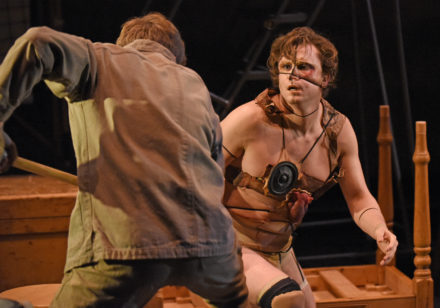
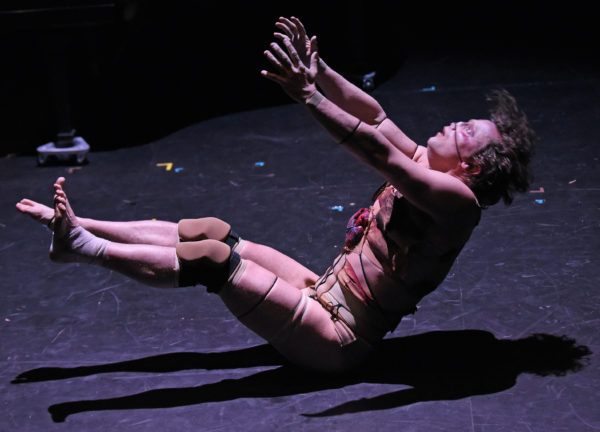
Max Baumgarten in Four Larks’ ‘Frankenstein,’ onstage at the Wallis Annenberg Center for the Performing Arts (Photo credit: Kevin Parry)
From the moment the lights come up on the Four Larks production of “Frankenstein” to reveal a genteel 19th-century sea captain, singing a period chamber song while accompanied by live acoustic musicians in front of a stark white backdrop, it’s clear you are in for something unexpected.
One might argue that the LA-based performance troupe has already made a name for itself on the basis of delivering the unexpected, through its immersive, experiential productions that exist “at the intersection of theatre, music, visual art and dance” (as their online self-description puts it), and that anyone seeing their work should therefore expect, well, the unexpected.
Even so, thanks to the cultural saturation that has made the story of Frankenstein and his misbegotten creation familiar to almost every member of modern American civilization over the age of three, an audience member walking into the Lovelace Studio Theatre at the Wallis Annenberg Center for the Performing Arts, where Four Larks has mounted their latest effort for a now-extended run through March 7, will unavoidably be carrying their own well-encoded assumptions about the tale – and they likely won’t bear more than a passing resemblance to the 1818 novel with which Mary Shelley introduced it to the world.
Consequently, many members of the crowd probably won’t know, or won’t remember, that Shelley’s horror classic begins and ends in the frozen Arctic wasteland, with a naval officer on a mission to reach the North Pole (a situation rendered perfectly and instantaneously by the arresting opening tableau), or that the title character relates his sad history as a cautionary tale against the dangers of man’s insatiable desire to bend the universe to his own will.
Four Larks, however, has not forgotten. In this ingenious cabinet-of-curiosities-style production, troupe founders Mat Sweeney and Sebastian Peters-Lazaro, along with librettist Jesse Rasmussen, strip away the generations’ worth of cultural baggage that has been piled atop Shelley’s original, allowing it to serve as both their inspiration and their road map for a densely-packed unwinding of the narrative that takes us from its pre-Victorian setting up to the precipice of our own modern future within the space of 70 minutes.
Utilizing a breathtakingly talented ensemble of twelve performers (who rarely leave the stage), the multi-media performance reclaims the author’s voice in her name by making her a central presence onstage; it is Mary Shelley herself who speaks the words as her literary stand-in enacts the story of his own act of creation, serving as a constant reminder that this quintessential tale of terror came from the imagination of a woman – a fact that has particular resonance in a world in which the patriarchal urge to dominate and control has led us to the brink of self-destruction.
Underscoring the contemporary import of that radical motif – as well as the prescience of Shelley’s not-very-subtle warning about the dangers of unchecked technological advancement – is a near-hypnotic progression of sights, sounds, and ideas that incorporates speaking, singing, movement, sound, lights, projections, and environmental effects to connect the dots between Frankenstein’s transgressive creation – or rather, the reckless hubris it represents – and a modern world living in the ominous shadow of nuclear destruction, artificial intelligence, and climate change.
Along the way, the literal aspects of the story sometimes get lost within the conceptual flourishes – especially for those unfamiliar with the original text – but in this envisioning, which Four Larks actor Lukas Papenfusscline, calls a “collaboration” with Shelley herself, that is part of the point. Though the production has clung tightly to the novel in terms of remaining faithful to its plot, it revels in translating its ideas into a stylized, contemporary vision that clearly communicates them to an audience and allowing them to hit us in a more direct and visceral way.
Still, many of the show’s highlights are masterful renditions of segments from the book. The creature’s birth, brought to life through the acrobatic contortions of actor Max Baumgarten, is a master class of physical performance that evokes the loneliness, pain and transgression of the experience while dazzling us with an unforgettable display of sheer grace and prowess. Similarly, the lengthy episode depicting the creature’s secret spying on the life of a human family through the windows of their cabin in the woods is executed with a crystalline simplicity that both conveys its essence and illuminates its profound observations about humanity. Finally, in an electrified (and electrifying) climactic flourish, the story’s last act of creation is terrifyingly rendered in a jaw-dropping combination of performance, stagecraft and technology that unites past and present in a spectral vision conveying the all-encompassing dread of a future mankind has created in its own image.
It may all sound a bit overwhelming, and that is exactly what was intended, not just by Four Larks but by Mary Shelley herself; but although there is no effort to soften the “shock and awe,” it is countered by the precision with which this intricately choreographed theatrical exercise is executed.
As Papenfusscline put it in an interview with the Blade ahead of the show’s opening, “It’s like a Swiss watch with a million little parts, some of it is the music, design, some of it is the acting, and we’re creating this intricate work of art that as a performer is endlessly rewarding. I’ve just had a blast.”
Judging by the sleeper success this world-class production has enjoyed in its world-premiere run at the Wallis, audiences are having a blast, too.
Movies
A jubilantly queer ‘Anthem’ for a world beyond borders
A story of human experience that happens to be about LGBTQ people

In a season that has so far failed to deliver the kind of big-ticket Hollywood must-see “prestige” blockbusters we enjoyed with the “Barbenheimer Summer” of 2023, it’s a relief that there is so much under-the-radar indie content out there to fill in the gaps.
That’s especially true, perhaps inevitably, when the story resonates with “minority” populations and is told by someone from among them who shares their longing to see themselves represented on the screen – and the perfect case in point can be found in “National Anthem,” the first feature-length work from photographer/filmmaker Luke Gilford, which is currently enjoying a limited theatrical run a year after an acclaimed debut at 2023’s SXSW Festival in Austin.
Inspired by his photo monograph of the same name, Gilford’s movie takes place in rural New Mexico and centers on 21-year-old Dylan (Charlie Plummer), a day laborer struggling to provide for his alcoholic mother (Robin Lively) and pre-teen brother (Joey DeLeon) while dreaming of escape. Hired for an extended job at a ranch outside town – headquarters for queer rodeo stars Pepe (Rene Rosado) and Sky (Eve Lindley), and home to the diversely gendered commune of pan, poly, and non-conforming “misfits” they’ve gathered around them – he is soon drawn into the fold by feelings he’s used to keeping secret. In particular, he has feelings for the beautiful and headstrong Sky, who shares a mutual spark with him despite her loyalty to Pepe. Emboldened by their growing relationship, he begins to revel in the freedom he feels within his newfound community – but even as he tries to bring his two worlds together, mounting tensions in both threaten his newfound sense of liberty with a rude awakening that just might leave him without a place in either.
Expressed in a paragraph, that premise is easily recognizable as a queer coming-of-age story, but there’s something about the film’s expansive heart that makes it much more than that. Boiled down to its simplest essence, it’s the kind of narrative – centered on a kind-hearted underdog of a dreamer and charting his path toward transcendence of the obstacles that lie in his way – that has appeal for anyone, queer or straight or anywhere in between. Thanks to Gilford’s compassionate approach to the material, not to mention a savvy grasp of the complex politics of human emotion and a thrillingly open-ended outlook on sexuality and gender that manages to feel more celebratory than it does transgressive, it becomes not just an authentic story about queer experience, but a story about human experience that happens to be about queer people.
Much of how it achieves this is by the way it treats its love story; though it may cover a lot of other angles, “National Anthem” places most of its bets on romance. Indeed, it aims to emulate the passionate tales of love-at-first-sight found in the old-school Hollywood classics we all grew up with, and hits the mark with palpable accuracy despite complicating it with layers of gender, orientation, and pansexual polyamory. Lushly romantic, with as many emotional ups and downs as any tearjerker and a powerfully sexy chemistry that comes through despite the film’s tastefully “PG” presentation of eroticism between characters, it’s as lushly romantic and emotionally engaging as any mainstream Hollywood fantasy. That might even signify a major part of the film’s agenda; if a love story taking place outside the “norm” of cultural conformity can feel so right in a big-screen fantasy, then why shouldn’t it feel that way when it’s an off-screen reality, too?
Much of the reason it feels so right, of course, has to do with the screenplay (by Gilford with David Largman Murray and Kevin Best), which infuses both Dylan and Sky with relatable layers of feeling and makes them achingly human; but it also hinges on the performers in the roles, and thankfully both are perfectly cast. Plummer, whose performance earned exuberant praise during the film’s festival circuit run, wins our hearts from the beginning, conveying a guarded tenderness and sense of longing that never seems forced; but it is when Lindley’s Sky enters the scene that the screen truly lights up with her blend of headstrong self-determination, nurturing patience, and unbridled sexuality. It’s one of the best-written trans roles we’ve seen, focusing not on any suggestion of “otherness” – indeed, her trans identity is never even mentioned, simply left to be self-evident in the most gloriously empowering way possible – but presenting a fully-fleshed out person having a universal experience, and it’s played by a gifted trans actress whose charisma makes the perfect magnet for Plummer’s puppy-dog adoration. She’s on a journey of her own, and she makes it come to life for us as if she were born to do it.
The film handles its other relationships with equal depth, with Lively giving a deft turn that finds compassion and redemption for the neglectful mother she portrays and an endearingly genuine juvenile performance from newcomer DeLeon. A particular standout is nonbinary actor Mason Alexander Park, whose subtly layered energy as a commune member who becomes both a friend and a “maternal” figure to Dylan brings an important calming presence.
Still, it’s ultimately Gilford who is the star of “National Anthem.” Combining a powerful visual aesthetic – which captures the mythic vastness and Americana of its New Mexico setting while infusing its intimate scenes with a luminous aura of inner light shining through into the world – with an assured sense of the emotional “blueprint” of his narrative, he creates a star-crossed love story for the ages, made all the more powerful by the “outsider” status of its characters. Instead of making them curiosities, he finds a way to uplift them all, even as they stumble, fall, or fail. He paints a portrait of this queer rodeo “family” that has room to accept everybody, without labels or judgements or conditions beyond basic respect, and it’s beautiful.
That, of course, is where the title comes in. In taking the familiar landscape and tropes of the American Western genre – which, in spite of its modern-day setting and focus on matters of queer identity, “National Anthem” is unquestionably influenced by – and reinventing them with a queer cast of characters identifying across all the spectrums (and in some cases, multiple spectrums), Gilford’s movie encourages us to say “yes,” to follow our bliss, to take the plunge and explore the things that call to our hearts, and it suggests that, in doing so, we can build the world we want around us as we go. It suggests that, in a world based on comfortable constructs, we can always change those constructs to make things better.
That’s what his characters do, and in so doing become a sort of “nation within a nation,” perhaps, by choosing to live outside the oppressive tide and find one’s own “American Dream” – and it’s truly a land of the free and a home of the brave.
That’s a bold message, perhaps, and a timely one in this particular election year.

When this week’s Summer Olympic Games kick off in Paris, it will bewith an abundance of flair, fireworks, and joie de vivre — that’s French for “joy of life” — and more inclusion than ever before.
For the first time, the Olympics have achieved gender parity, with 50% of athletes identifying as men and 50% identifying as women, and at least two athletes identifying as transgender nonbinary. There is one trans man, boxer Hergie Bacyadan of the Philippines. These athletes will compete in 32 sports and 339 events, starting this week, and once again there will also be a Refugee Team featuring 37 athletes from all over the world, vying for medals in 12 sports.
There will also be a huge amount of LGBTQ representation among more than 200 countries and that Refugee Team. The big name athletes include track and field star Sha’Carri Richardson, shot-putter Raven Saunders, basketball superstars Diana Taurasi, Breanna Stewart, new “Pops” Brittney Griner, Alyssa Thomas (who is engaged to her WNBA teammate DeWanna Bonner), BMX Freestyle riders Hannah Roberts and Perris Benegas, the British diver Tom Daley, who is competing in his fifth Olympic Games, and Brazil’s legendary soccer player Marta, who will compete for a sixth time.
But determining exactly how many athletes are out is no easy feat.
Published estimates of total competitors range from 10,500 to 10,700, and the official Olympics site counts 11,232 athletes, including one 18-year-old woman representing the People’s Republic of China who will compete in a sport making its debut at this Olympics, called breaking — better known as breakdancing. She is identified only as “671,” no first or last name, just “671.” Good luck, “Six!”
While we don’t know how “671” identifies, there is a consensus that these games will see the largest contingent of out athletes since the 2020 Olympics were played in Tokyo in 2021, delayed a year because of the pandemic. GLAAD and Athlete Ally counted 222 out athletes competing in Tokyo, as mentioned in their comprehensive guide to these Summer Games, a collaboration with Pride House France.
In 2021, the editors at the LGBTQ sports website Outsports had estimated there were 120 competing in Japan, and updated that number to 186 after learning about other athletes who were LGBTQ, including some who came out after competing. That number, they said, set a new record.
This year, they have once again done the math, and calculated how many queer competitors will participate in this year’s Summer Games: Fewer than in Tokyo, but more than in any other Olympics.
“At least 144 publicly out gay, lesbian, bisexual, transgender, queer and nonbinary athletes will be in Paris for the 2024 Olympics, the second consecutive Summer Games where the number has reached triple digits,” says Outsports co-founder Jim Buzinski. “There are also a record number of out male Olympians.”
And yet, Team USA has only one man who is publicly out: distance runner Nico Young, a cross-country and track and field athlete at Northern Arizona University. Young, 21, came out as gay in 2022 in a post on Instagram.
“I am living proof that it is not a choice, it is something I have always known and been aware of, but have kept silent out of fear of rejection,” Young wrote. “I have struggled to accept myself, but I am becoming more proud and happy with who I am. I have realized that the only reason I never liked this part of who I am was because of what society has told me, not because of how I actually feel. This is a quality of myself as well as so many other people that should be accepted and celebrated just the same as a straight person’s identity is.”
USA has the most out athletes
At least 24 countries — including the Refugee Team — are represented by at least one publicly out athlete in 32 sports this year. As before, the United States has the most out athletes of all with 28, about one-fifth of the athletes on the “Team LGBTQ” list compiled by Outsports.
Brazil has 22 out athletes, Australia has 17, Great Britain is fourth with 10 and Germany has nine.
Not surprisingly, out women athletes far outnumber out men on their list by about a 7 to 1 margin. But it’s not women’s basketball that has the most out athletes of any sport, with more than 30 players identifying as LGBTQ. It’s women’s soccer.
Tierna Davidson of Menlo Park, Calif., is the sole American competing in women’s soccer who is publicly queer. She proposed to her partner Alison Jahansouz in March. At Stanford, Davidson and her team won an NCAA title in college football. Then, at age 20, she won the 2019 Women’s World Cup — the youngest player on USWNT — and the Bronze with Team USA in Tokyo. But with the departure of the team’s gay icons, namely Megan Rapinoe, Davidson, 25, told The Athletic she said she feels pressure like never before.
“I think that there’s no illusion that the ratio of queerness on the team has decreased a little bit, at least with players that are out,” she said, noting that as an introvert she is not seeking the high profile of Rapinoe. “And so, I think it’s important to recognize that I am part of that ratio, and that it is important to bring issues to the table that are important to me and to my community, and be able to be that representative for people that look up to queer athletes and see themselves in me on the field.”
Canadian soccer player Quinn, 28, returns to the Olympics this week as the first transgender nonbinary athlete to have won a gold medal, at Tokyo in 2021, as the Blade reported. They came out to their team in an email in 2020, and recently took part in a Q&A about that experience.
“I think I had a better relationship with my teammates after coming out,” they said. “I had a new confidence and ability to be vulnerable with them and it strengthened many relationships in my life. There were some players on my professional team at the time who were ignorant, but having the overwhelming majority of players and staff support me really created an environment where anything less than that wouldn’t be tolerated.”
As of press time, GLAAD and Athlete Ally are still counting how many out athletes will be competing in Paris. But the numbers aren’t as important as visibility, GLAAD President & CEO, Sarah Kate Ellis told the Blade.
“LGBTQ athletes continue to shine at the Olympic Games, including transgender athletes who will help reporters and viewers to see their humanity as well as their achievements,” Ellis said. “For the first time there will be gender parity among Olympic athletes, a significant milestone that comes as transgender and nonbinary people are also included. This guide, created in collaboration with Athlete Ally and Pride House France, is uniquely positioned to help media covering the Games include and report on LGBTQ athletes so their talents and stories are centered to inform and inspire acceptance among audiences around the world.”
Of course, compiling all these lists is a gargantuan task, one that LGBTQ historian Tony Scupham-Bilton of Nottingham, U.K., has been doing for more than a decade with a blog called The Queerstory Files. He told the Blade he contributed to the list Outsports published.
“I had six athletes which they didn’t have on their list when we compared them last week, but there were about 20 athletes on their list which I didn’t have,” Scupham-Bilton said, noting that inclusion is increasing. “Paris has already exceeded previous levels of representation and involvement. That indicates a probable increase in medals. I have also noticed that there has been an increase in the number of Olympians coming out between Olympics.”
One other big change in terms of representation that this historian sees is how the Olympics themselves have embraced the LGBTQ community.
“Even though there have been Pride Houses at most Olympic Games since Vancouver 2010, the majority of which have been supported by the various organizing committees, Paris 2024 is the first to include it on its official website,” Scupham-Bilton told the Blade.
As the Blade reported, Team USA celebrated Santa Cruz, Calif., native Nikki Hiltz qualifying for the Olympics with their record-setting finish in the 1,500-meter race earlier this month with an Instagram post that drew a flood of negative comments from straight cisgender men.
Hiltz, 29, is the other trans nonbinary athlete competing in Paris. Team USA’s post showed them writing “I ❤ the gays” on a camera lens. A lot of the comments showed ignorance of their actual identity, calling them a “cheater” and “a man.”
Hiltz responded with grace, in an Instagram post about how far they’ve come since 2021. That year they finished dead last in the Olympic trials, held shortly after they came out. Earlier this month, Hiltz reflected on their growth.
“I’ve spent the past 3 years rebuilding my confidence and reshaping that narrative. Telling myself every single day that I belong. Showing up to meets, taking up space, and making friends with those little voices in my head that consistently tried to convince me I was too confusing, I was a burden or I wasn’t enough,” they wrote.
This year, in Eugene, Ore., was different.
“I stood on the start line of the Olympic Trials 1500 final and told myself ‘I can do this, the world will make space for you. Remember to enjoy this race and have fun playing the game of racing, this is your moment.’ The gun went off, it got hard, I didn’t crumble, I didn’t fall off the pace, I held on and 3 minutes and 55 seconds later I broke the finish line tape and became an Olympian.”
But by far the biggest name in LGBTQ sports at this Olympics is that of the fastest woman in the world: Sha’Carri Richardson. She missed out on competing in the Tokyo 2020 Olympic Games in 2021 for testing positive for cannabis, and now is going for gold.
Richardson graced a recent cover of Vogue, and told the magazine how committed she is to this goal: “Everything I do—what I eat, what I drink, if I stay up too late—it’s all reflected on the track,” she said. “Every choice. That’s what the world doesn’t see.” But she also talked about keeping herself fixed firmly in the present. “If all I’m doing is looking ahead, then I can’t be where I need to be. Which is here, now.”
The Blade will be there, in Paris, to bring you all the excitement from the Olympic Games.
a&e features
‘Betty la Fea’ returns after 25 years and she’s a queer ally, mother and feminist boss
Telenovela returns with new series

By GISSELLE PALOMERA | CALÓ News — The most successful telenovela in history is back on our TV screens through Prime Video in 240 countries and territories worldwide. After a more-than-historically successful run “Yo Soy Betty, La Fea,” returns as “Betty La Fea, The Story Continues” for a 10-episode series premiering July 19.
The series starts off with la original, Beatriz Pérez Pinzón, better known as Betty o Betty La Fea (Ana María Orozco), narrating over the scene of a funeral where she says: “Finalmente me fuí de sus vidas.”
It’s not actually her own funeral, but a dramatic segue into her return 25 years later. Since the show, Fernando Gaitan, Colombian screenwriter and producer of the original series, has passed away. His legacy outlives him through the revamp of this series, produced now by Mauricio Cruz Fortunato.
Seconds into the eulogy, Betty knocks over the casket as it’s being lowered to the ground, to which queer presence, Hugo, or Huguito (Julian Arango), fulfilling the sassy gay man trope once again, responds with: “Con ustedes: Brutty La Fea,” introducing her as the same lovable bruta or Klutz we all grew to love over the first series.
Betty and Armando reunite after separating, while their daughter is off studying fashion in New York. The new sequel picks up where Ecomoda, a previous show spinoff, leaves off. In Ecomoda (2001-2002), Betty and Armando welcome daughter Camila into their lives and embark on the journey of balancing parenthood and success at their family’s company.
Once the funeral is over, Betty’s father, abuelito Hermes Pinzon Galarza (Jorge Herrera), picks her up along with Betty’s longtime friend, Nicolás Mora Cifuentes (Mario Duarte), welcoming him back on screen with the same dorky, lovable and slightly annoying friendship with Betty. Hermes makes a one-line comment suggesting that Betty should hurry so they have enough time to leave flowers on her mother’s grave. This is a shocking departure after news outlets reported last summer that Dona Julia was set to return to the series.
In this sequel, the underlying theme is that of a broken family in need of unity, after the loss of a family member, and Ecomoda, their family’s fashion corporation, going through a financial crisis. ‘Mila,’ or Camila, (Juanita Molina) comes in as one of five new characters as Armando and Betty’s daughter. Mila and Betty are somewhat estranged and the first episode shows a much closer relationship, with Mila referring to her dad as ‘Armandaddy.’
Following the family member’s death, a video is played regarding how assets will be divided in relation to Ecomoda. To everyone’s shock, Betty is appointed as the new president of Ecomoda, booting Armando out of the position after a short, two-year run as the fashion company president.
Speaking of assets, without the presence of the OG “cartel de feas,” now only consisting of Bertha Muñoz (Luces Velásquez) and Sandra Patiño (Marcela Posada), the show would be a lot more drama and a lot less comedy.
Sandra comes out as queer, adding more valid on-screen representation and stating that she finally felt safe to come out because of Betty’s allyship and encouragement to be true to herself.
Main character and problematica, Patricia Fernandez (Lorna Cepeda), also returns to the sequel, bringing the same attitude to our screens, but with a big update– she’s married to a rich viejito.
The first episode wraps up with a heartbroken Betty reading a letter her mamita wrote to her from her deathbed, giving her the courage to continue fighting the good fight she’s always fought to be independent and courageous.
The series does not miss and in fact continues to do justice to feminism as its central theme and embracing oneself in the face of corporate greed and family troubles.
The new series is faithful to the original series, using flashbacks to set the scene for many meaningful and painful memories between Betty and Armando.
Among other characters that returned to the new series are: Marcela (Natalia Ramirez), Freddy (Julio Cesar Herrera), and Saul (Alberto Leon Jaramillo).
The series is now available on Prime Video.
a&e features
Museum of Latin American Art hosts discussion of drag in BIPOC and AAPI spaces
Symposium dedicated toward building community
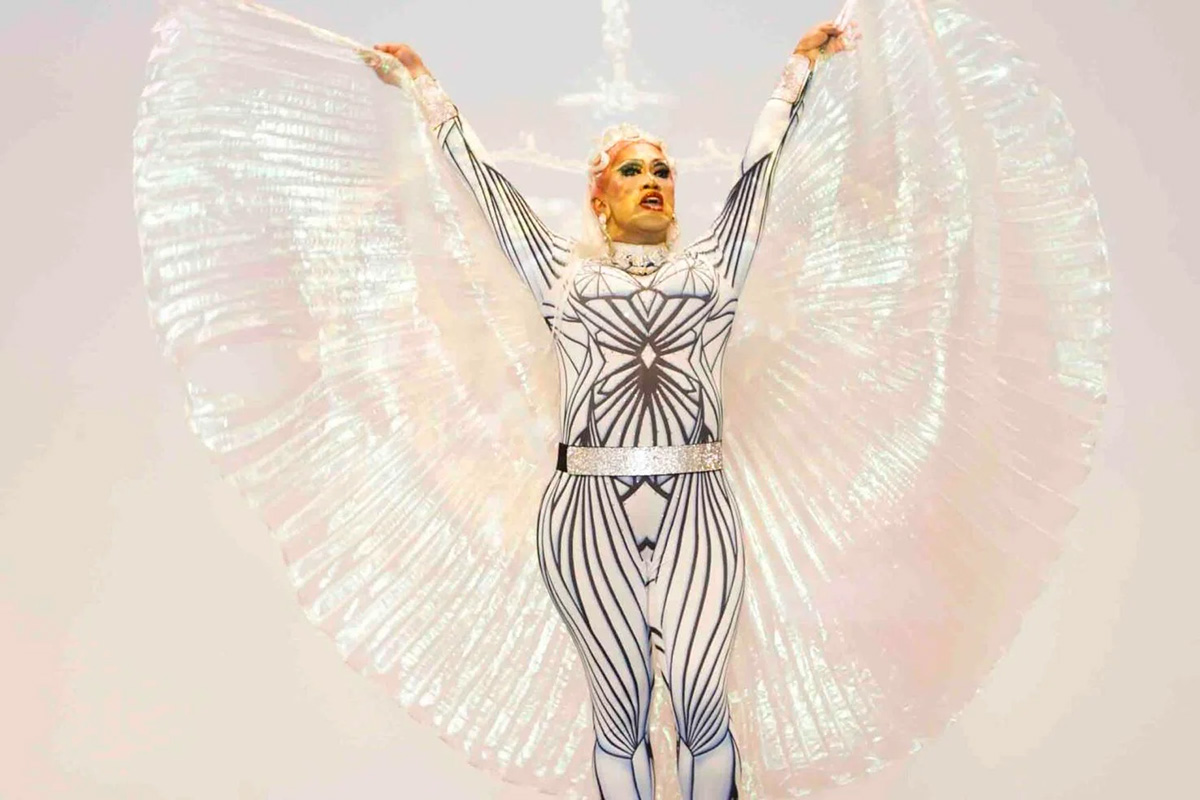
By GISSELLE PALOMERA | CALÓ News — Drag performers came together at the Museum of Latin American Art (MOLAA) to close out Pride Month, hosting a discussion on drag and how to create safe and inclusive spaces for the BIPOC and AAPI communities.
“I do what I do, so others can do it too,” said Foxie Adjuia, one of three panelists for the Symposium on Empowerment in Pride Spaces. “I’m in transpersonal disciplines, and I’m going to be utilizing drag as a way to impact my community in a positive way,” added Adjuia, a drag performer on The Boulet Brothers’ TV series, “Dragula.”
The symposium was dedicated toward building community, resilience and acceptance through an interactive drag performance with Adjuia, Robbie Osa and Mahalia Nakita.
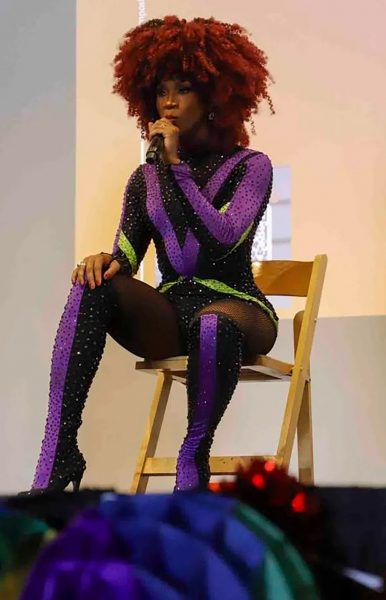
During the discussion, Adjuia, Osa and Nakita asked questions to respond themselves and ask input from the audience. On the question of how to utilize Pride as a form of liberation and keep it in alignment with the civil rights movement of the LGBTQ community, Adjuia said that Pride is about chosen family and about unchaining ourselves from the hegemony that a lot of queer and Black, Indigenous and People of Color get indoctrinated into.
“[Pride] is an act of liberation in and of itself and it’s an act of self-actualization,” Adjuia said.
Adjuia opened up about how it hasn’t always been easy to embrace Pride and overcome the adversity that comes with this identity. “What really got me through the darkness was my community and their act of Pride, connection with each other and uplifting energy.”
They performed their speech about community connection and added that they believe that Pride is not just about partying, but about embracing the struggle that started with the 1969 Stonewall Riots. This was a pivotal point in LGBTQ+ history.
Using the spirit of Pride to overcome adversity
“LGBTQ+ awareness is a challenge for a lot of students, especially if they don’t understand how to judge certain situations because they are special ed,” said Yuri Jimenez, special education teacher. “So I have to create conversations and lessons to create that space where everyone feels accepted.” Attendees of the event responded to the questions, drawing from their own experiences.

“[BIPOC Drag Queens] get that double combo of being racially profiled as Latino and gay,” said Osa, a drag performer and behavior analyst. “I found that drag is a platform to dismantle those stereotypes.”
Osa is an alumni of California State University, Long Beach, who now dedicates her time toward building inclusive and accepting spaces in education. She uses drag as a form of art that relays political and meaningful messages.
“Tolerance comes with strings attached, and acceptance means fully [embracing] who you are, your faults and loving you unconditionally,” said Osa.
Promoting equality and inclusion
“We are all part of different groups within the [BIPOC] community and each community needs a little bit of representation [in Pride spaces],” said Nakita.
“As a therapist, I’m always making sure that I am creating affirming spaces for whatever identities walk through my door, and making sure that I am educated and can provide them with resources and support,” said Jennifer Jiries, who is a queer therapist and social worker based in Long Beach. “We heal in community, so we need to have spaces that actually support healing and connection.”
a&e features
Coming-of-age story ‘El Paisa’ on PBS
Film continues successful run across L.A. film festivals
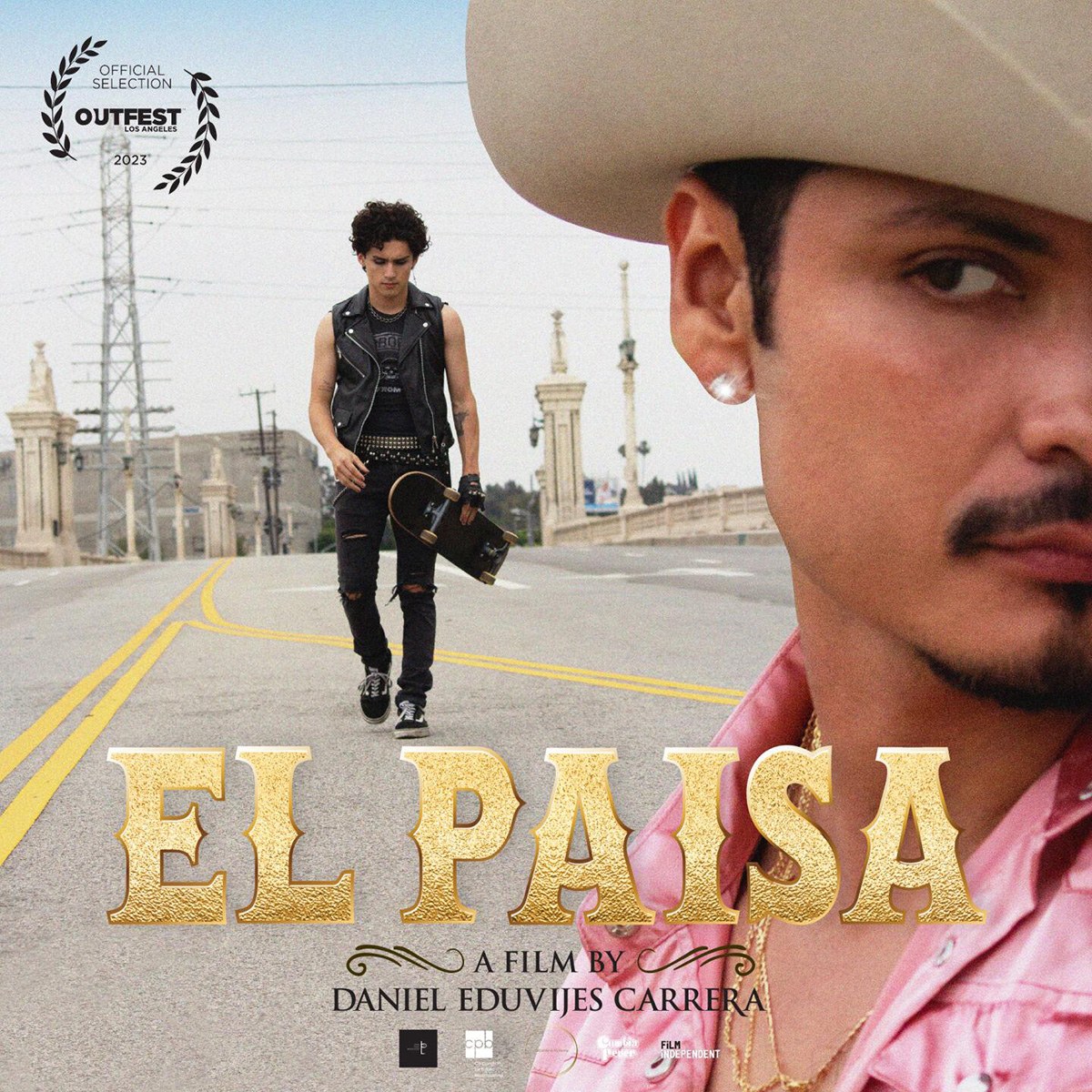
By GISSELLE PALOMERA | CALÓ News — “El Paisa” will be featured nationally as part of the 2024 PBS Short Film Festival starting Monday, July 15, shortly after winning the award for Best LGBTQ+ Short at Cannes International Film Festival. In its 13th year, the PBS Short Film Festival features 15 independent films chosen for their impact and reflection of American life, culture, lived experiences and family dynamics.
The film continues its successful run across Los Angeles film festivals, sweeping awards for Best Short Film, Best LGBTQ+ Short Film and several Jury Awards.
The film is a product of the Latino Public Broadcasting. The Digital Media Fund, designed to provide resources for independent Latin American filmmakers to create digital short form programs for online distribution in collaboration with an existing public television platform such as PBS.
The Digital Media Fund prioritizes submissions in the genres of science, biography, history, health, personal storytelling, art, cultural documentary and narratives. The fund allocates between $10,000 and $30,000 dollars for the projects, depending on the proposal. Submissions are now closed and will reopen next year.
“El Paisa,” is an East L.A.-set coming-of-age story featuring an unlikely duo that begins to deconstruct the traditional expectations and roles of gay men within Latin American culture.
Film director Daniel Eduvijes Carrera says the film is reminiscent of his own story as a queer son of immigrants who struggled to embrace his own identities as he grows up on the unforgiving streets of L.A. riddled with barrio gang violence.
Carrera says he felt completely isolated due to his queer identity growing up. In a director’s statement, he says there was some level of support from his Latin American identity within his own family of nine siblings, but when it came to embracing or even understanding his queer identity, he was completely at a loss.
It wasn’t until Carrera walked into his first gay vaquero bar on his 21st birthday and witnessed the embodiment of masculinity entwined with queer culture he only dreamed of as a kid that it made sense to him that his queer identity could in fact co-exist with his Latin American identity.
Carrera is now an accomplished voice in filmmaking, using his perspective and lived experiences to create stories that deconstruct the societal norms that marginalize queer people within Latin American cultures. He has gained notable fellowships, grants and prestigious recognition for his voice in the filmmaking and entertainment industry.
The film will be available to watch across all PBS platforms that include the PBS App, YouTube and PBS.org.
This story was produced by CALÓ News, a news organization covering Latino/a/x communities.
Sports
Brittney Griner and wife celebrate birth of their son
Cherelle Griner gave birth to healthy baby boy earlier this month

It’s a boy for Brittney and Cherelle Griner. The Phoenix Mercury center revealed the news in interviews with CBS Sports and NBC News.
“Every minute I feel like he’s popping into my head, said Griner. “Literally everything revolves around him. And I love it.”
The couple officially welcomed the baby boy on July 8. He weighs 7 pounds, 8 ounces.
“That’s my man. He is amazing,” Griner told CBS Sports. “They said as soon as you see them, everything that you thought mattered just goes out the window. That’s literally what happened.”
Griner, 33, corrected the CBS News correspondent who said, “You’re about to be a mom!” She told her Cherelle, 33, had already delivered the baby and that she preferred to be called,“Pops.”
Griner told NBC News correspondent Liz Kreutz they chose to name their newborn son, “Bash.”
The WNBA star said she is Bash’s biggest fan and is constantly taking photos of him. “My whole phone has turned into him now,” Griner told CBS Sports.
The baby comes as Griner gets set to play in Saturday’s WNBA All-Star Game and then head to Paris with Team USA to compete for their 8th straight gold medal at the Summer Olympic Games.
“It kind of sucks because I have to leave, but at the same time, he will understand,” said Griner.
Her time in Paris will mark the first time since the basketball star was released from a Russian gulag, where she was held on drug charges for nearly 10 months in 2022.
“BG is locked in and ready to go,” Griner told NBC News on Friday. “I’m happy, I’m in a great place. I’m representing my country, the country that fought for me to come back. I’m gonna represent it well.”
Griner also spoke with NBC News about her hopes the U.S. can win the freedom of imprisoned Wall Street Journal reporter Evan Gershkovich, who was sentenced to 16 years in a Russian maximum security prison on Friday.
“We have to get him back,” she said.

The Television Academy has honored dozens of queer creators and queer-themed TV shows in the nominations for the 76th annual Emmy Awards, announced Tuesday in a broadcast hosted by actors Tony Hale and Sheryl Lee Ralph.

Sheryl Lee Ralph and Tony Hale, along with Academy Chair Cris Abrego, announced the nominees for the 76th Emmy Awards on July 17, 2024. (Photo courtesy of Emmys.com)
The winners will be announced at the Primetime Emmy Awards on Sept. 15.
Queer-themed shows like Netflix’s “Ripley” and “Baby Reindeer” and FX’s “Feud: Capote vs. the Swans” scored nominations across 13, 12, and 10 categories respectively.
“Ripley,” based on Patricia Highsmith’s novel “The Talented Mr. Ripley” about a queer con man, scored a nomination for outstanding limited or anthology series, as well as acting nominations for gay actor Andrew Scott in the title role and Dakota Fanning for supporting actress. It also received nominations for writing, directing, cinematography, special visual effects, sound editing and mixing, picture editing, costumes, casting, and production design.
“Baby Reindeer,” a limited series based on bisexual writer-actor Richard Gadd’s autobiographical one-man show about his experiences being stalked, earned Gadd nominations for writing and his lead performance, as well as acting nominations for lesbian actress Jess Gunning and transgender actress Nava Mau for their supporting roles. The show also picked up nominations for outstanding limited or anthology series, directing, casting, costumes, picture editing, and music supervision.
Ryan Murphy’s latest “Feud” anthology, focusing on an episode in the life of gay writer Truman Capote, earned acting nominations for Tom Hollander, Naomi Watts, Treat Williams, and Diane Lane, and a directing nomination for gay director Gus Van Sant. It also earned nominations for casting, costumes, hairstyling, makeup, and main title music.
Once again, RuPaul cleaned up in the reality categories, with MTV’s “RuPaul’s Drag Race” earning nominations for outstanding reality competition series, production design, casting, choreography, directing, picture editing, and sound mixing. RuPaul also earned a nomination for outstanding reality competition host — if he wins, he’ll extend his record eight consecutive wins in the category.
“RuPaul’s Drag Race: Untucked” also earned nominations for outstanding unstructured reality program and picture editing. “Untucked” will be up against Netflix’s “Queer Eye” in both categories.
Other queer reality shows earning nominations include HBO’s “We’re Here” and Shudder’s “Boulet Brothers: Dragula,” each with nods in the hairstyling and makeup categories.
Showcase’s epic gay romance “Fellow Travelers” earned acting nominations for out actors Matt Bomer and Jonathan Bailey and a writing nomination for gay writer Ron Nyswaner.
Lesbian actress Jodie Foster earned her first Emmy nomination for her lead role on HBO’s “True Detective: Night Country,” which picked up a total of 19 nominations.
Queer actress Ayo Edibiri will be defending her win earlier this year for outstanding lead actress in a comedy with a nomination for her work in the second season of FX’s “The Bear,” which broke a record for a comedy with 23 nominations this year.
Lesbian actress Holland Taylor earned a nomination for her supporting role on Apple TV+’s “The Morning Show.” The show also earned Reese Witherspoon her second nomination for playing bisexual reporter Bradley Jackson. Altogether, “The Morning Show” has 16 nominations this year.
Bisexual actress Hannah Einbinder earned her third nomination for her supporting role on HBO’s “Hacks,” which earned a total of 16 nominations this year.
“Saturday Night Live’s” Bowen Yang got his third nomination for supporting actor in a comedy series. Altogether, the long-running sketch show has 17 nominations this year.
Out comedian John Early got a writing nomination for his HBO special, “John Early: Now More Than Ever,” while HBO’s “The Other Two,” which ended its three-season run last June, earned its first Emmy nomination, for writers Chris Kelly and Sarah Schneider.
To be eligible for nomination for the 2024 Emmys, television shows must have been released between June 1, 2023, and May 31, 2024. The awards show will take place Sept. 15 at the Peacock Theater in Los Angeles and be broadcast on ABC.

‘Breaking the Rainbow Ceiling’
By Layla McCay
c.2024, Bloomsbury
$24/240 pages
You can see the CEO’s office from the outside of your workplace.
You’ve actually been in that office, so you know what it looks like inside, too. Big, expansive desk. Cushy, expensive chair. Ankle-deep carpet. The CEO got there through regular means over the course of his career – something you’d like to do, too. But as you know, and as in the new book, “Breaking the Rainbow Ceiling” by Layla McCay, you’ll have to take a different path.

Of all the thousands of board seats and C-suite occupiers in American businesses, only a very tiny number – less than one percent – are occupied by people who identify as LGBTQ. In London, says McCay, no one on the Financial Times Stock Exchange identifies as such. Just six of the world’s leaders, past or current, have come out as LGBTQ.
The reasons for this are many, from discomfort to a sense of a lack of safety or just plain mistrust. Employees often don’t talk about it and employers can’t or don’t ask, which can lead to a lot of issues that cis, heterosexual employees don’t have to think about.
LGBTQ employees make less money than their straight co-workers. They experience discrimination ranging from sexual violence on one end, to micro aggressions on the other. Discrimination can be found in educational settings, and networking events, in a lack of mentorship, and the feeling that one needs to “code-switch.” Even an overseas job offer can be complicated by identifying as LGBTQ.
And yet, says McCoy, there are benefits to coming out, including a sense of authenticity, and feeling as if a load has been removed from one’s shoulders.
If you are an employer, McCoy says, there are things you can do to help. Include LGBTQ people in your diversity programs at work. Insist on it for recruitment. Make sure your employees feel safe to be themselves. Make all policies inclusive, all the time, from the start. Doing so benefits your business. It helps your employees.
“It’s good for society.”
Pretty common sense stuff, no? Yeah, it is; most of what you’ll read inside “Breaking the Rainbow Ceiling” is, in fact, very commonsensical. Moreover, if you’re gay, lesbian, bi, trans, or queer, you won’t find one new or radical thing in this book.
And yet, inside all the nothing-new, readers will generally find things they’ll appreciate. The statistics, for instance, that author Layla McCay offers would be helpful to cite when asking for a raise. It’s beneficial, for instance, to be reminded why you may want to come out at work or not. The advice on being and finding a mentor is gold. These things are presented through interviews from business leaders around the world, and readers will find comfort and wisdom in that. You’ll just have to wade through a lot of things you already know to get it, that’s all.
Is it worth it? That depends on your situation. You may find nothing in “Breaking the Rainbow Ceiling,” or it may help you raise the roof.

If there is any downside to living in an era when movies about queer people are finally plentiful, it’s that sometimes the best of them are overshadowed by bigger, splashier films and end up getting lost in the mix.
Two such titles are a pair of indie projects, both of which focus on “outsider” queer characters, newly available on the VOD market after brief-and-limited theatrical runs; each of them deserves a better fate than that.
The first of these, “Big Boys,” was a major hit in the 2023 queer festival circuit, winning multiple awards (including Outstanding Lead Performance honors for its young star, Isaac Krasner, at LA’s Outfest) and emerging as an audience favorite. It’s easy to see why.
Written, produced, and directed by Corey Sherman, it’s a small, slice-of-life story centered on Jamie (Krasner), a bright-but-awkward 14-year-old trying to navigate the dual challenges of growing up as a chubby gay-and-closeted teen, who sets out (along with his slick and more confident older brother Will, played by Taj Cross) on a camping trip with favorite cousin Allie (Dora Madison), though he’s initially disappointed when he finds out her new boyfriend Dan (David Johnson III) is also coming along. His attitude changes, however, when the interloper turns out to be a handsome young man who wears his physical “chunkiness” with an easy confidence. Yes, it’s an instant and impossible crush, leading to a weekend adventure that pushes awkward boundaries for all four campers. But aside from his attractiveness, Dan also emerges as a positive role model for Jamie, who begins to find a confidence of his own.
Equal parts bittersweet coming-of-age story and uncomfortable-yet-endearing comedy, Sherman’s movie wins us over early on, largely through the strength of Krasner’s performance; the young actor exhibits not just the comedic chops necessary to get laughs from even his most painful moments, but the vulnerability to make them ring true. Seemingly unafraid of exploring his own identity through his character, he turns in a tour-de-force which stands up to comparison with some of the greatest “young actor breakthrough” performances of all time.
He’s given an ideal foil in Johnson, whose easygoing charm as Dan still allows us subtle hints of an internal process that keeps him from coming off as callow and clueless – something that pays off well in the film’s quiet-but-heart-stirring climax, which is best left unspoiled here. Madison also provides invaluable support with a performance that captures the conflicted impulses that come between youth and adulthood, and Cross successfully gets past the casual toxicity of his aggressively hetero-centric character to remain sympathetic.
It’s a stellar collection of performances from an ensemble of relative newcomers, and it goes a long way toward endearing “Big Boys” to a presumably queer audience, which will likely find resonance in the way they each – especially Kasner – convey its theme of trying to claim and define one’s young identity when it goes against the grain of the world around you. But it’s ultimately Sherman, who drew heavily from his own experiences growing up as a plus-size queer kid in creating the film, that deserves full credit – not just for putting it all together, but for having the courage and determination to deliver a queer story that foregoes the glitz and glamour of “gay romance” and connects with the lived experience of viewers who may feel left out of the typically glossy mainstream depictions of queer life.
Cut from a similar cloth is “Cora Bora,” starring “Hacks” fan favorite Meg Stalter as the title character, a bisexual musician who might just be the poster child for clueless self-centeredness. Openly rude, unrepentantly shallow, and blatantly manipulative, she steamrolls her way through life seemingly oblivious to the impact her attitude has on others. Having departed her native Portland – and left behind longtime girlfriend Justine (Jojo T. Gibbs), though ostensibly maintaining a “long-distance open relationship” with her – to pursue a music career in Los Angeles, success has proven elusive. She decides to make a surprise visit back home to re-evaluate, only to find that a new girl (Ayden Mayeri) has moved in to take her place. When her attempts to reassert her claim in the household just make matters worse, Cora is forced to recognize that both her professional and personal lives are a shambles – but can she find the humility it will take to get “real” enough to repair them?
Directed by Hannah Pearl Utt from a screenplay by Rhianon Jones, “Cora Bora” also relies heavily on the talents of its star player. Statler, in a turn that lends a darker, more desperate edge to the comedic persona that has made her “Hacks” character one of that show’s biggest assets, is at once monstrous and endearing, a ridiculously broad yet shrewdly-drawn caricature of modern bourgeois boorishness that serves as a fragile cover for something deeper and – without spoiling anything – profoundly traumatic. The journey we take with her is at once hilarious and powerfully affecting, echoing a time-honored comic tradition of transcending pain by finding humor in a pain that feels universal.
She’s aided by an equally gifted supporting cast, with both Gibbs and Mayeri finding enough heart to keep either of their characters – the other two points of the film’s romantic triangle – from being positioned as a “villain,” and a convincing turn from Manny Jacinto (known for his breakout “himbo” role on TV’s afterlife comedy “The Good Place”), as a character that would otherwise seem too good to be true, lending credibility to an eventual resolution that hinges on a pile of coincidences that would seem absurd without his sincerity. There are also appearances from other familiar faces in cameo roles – such as Margaret Cho as part of a polyamorous commune and Chelsea Peretti as an outraged dog owner – which serve as highlights in a movie already rich with them.
Both “Big Boys” and “Cora Bora” are linked by a common thread. Each of them features a queer protagonist, of course, but they are outsiders even within their own community. Ultimately, their struggles are born of a perspective that separates them from the rest of the world, a lived experience that others around them do not and cannot fully share. It would be easy enough for either film to make its lead character the butt of the joke, but neither of them makes that choice. The humor comes through their relatability, rather than from their “otherness,” and that makes all the difference. Despite these films’ occasional painfulness, their kindness is what comes shining through – not just toward their misfit characters, but toward the misfits in the audience, too.
For our money, that’s what the world needs a lot more of these days, and it places these two hidden gems among 2024’s best releases so far.

Bars & Parties
Roosterfish to open new location in heart of WeHo
Venice gay bar’s second location will be in former Pump restaurant

The longtime Venice gay bar Roosterfish is expanding to a second location in West Hollywood, bringing the West Side vibe to the location vacated by Pump restaurant at the corner of Robertson and Santa Monica with a target opening date of late August.
The new location aims to be a big boost to the West Hollywood nightlife scene, offering both a full-service restaurant, and a dance and social space with two bars.
Pump closed its doors after 10 years at the iconic location and began sharing space with TomTom restaurant down the street last July. Roosterfish was quickly announced as the new occupant of the space. Vollera says the restaurant is just waiting for final permits from the city of West Hollywood to open the new location.
Owner Mario Vollera said it had long been an ambition to expand Roosterfish into the heart of Los Angeles’s gay community.
“We always wanted to have a Roosterfish in WeHo,” Vollera says. “When the location in Pump became available, we loved it. We liked that we could have a Roosterfish that’s bigger than what we have in Venice, so we took it.”
Vollera says the new location offers the opportunity to offer fine dining, which has also been a goal of the Rome-born owner.
“We are going to offer a small Italian-inspired menu. We’ll have five different dishes, light appetizers and desserts, and a weekend brunch, inspired by me. I’m the chef,” Vollera says. “The pasta is going to be homemade.”
“We would like to use this beautiful patio with the shade of these beautiful olive trees. We’ll have the same concept during the afternoons — less formal, more loungey,” he adds. “We designed the spot to be a nice comfortable spot to come for dinner or dancing, with two bars.”
WeHo clubbers already got a taste of what to expect from the new Roosterfish during a 10-day pop-up as part of WeHo Pride last month. Vollera says to expect more of the same with some surprises.
“We established a strong relationship with different promoters from the LGBTQ community that we already have a strong connection with. They’re going to help us have a very strong, proud, curated nightlife,” Vollera says.
Right now, the plan is to have DJs spinning music Thursday, Friday, and Saturday nights, along with occasional live music nights during the week.
Roosterfish first opened on Abbot Kinney in Venice in 1979 and served the West Side queer community for nearly four decades before closing in 2016. Vollera and his partners acquired the bar and reopened it in 2018. Vollera says he plans to keep the old Roosterfish open.
“We are very happy with what we are doing now. The original owners opened in 1979 and we decided to continue with the same name and logo to honor it,” he says. “We designed the new location similar to the accents and design we have in Venice.”
The new Roosterfish location is part of a big churn of nightlife venues in West Hollywood. Last month, the Abbey celebrated a reopening under new owner Tristan Schukraft, while across the street, the former Heart nightclub had a soft reopening under new owners as Beaches Tropicana.
Beaches Tropicana is eyeing a Labor Day weekend grand opening, with a new full-service restaurant offering Cuban fare. The original Beaches WeHo location at 8928 Santa Monica Blvd. is also getting a rebrand as Beaches Baja with a Tex-Mex menu.
-

 California3 days ago
California3 days agoCalif. transgender student laws draws backlash
-

 Congress2 days ago
Congress2 days agoNetanyahu mocks gay pro-Palestinian protesters
-

 Sports2 days ago
Sports2 days agoParis prepares for the gayest games since Tokyo
-

 Commentary3 days ago
Commentary3 days agoJoe Biden, our fiercest ally
-

 United Nations4 days ago
United Nations4 days agoUN officials reiterate calls for countries to decriminalize homosexuality
-

 California3 days ago
California3 days agoVillaraigosa announces bid for Calif. governor in 2026
-

 National3 days ago
National3 days agoTrans experiences with the internet range from ‘harrowing’ to ‘powerful’
-
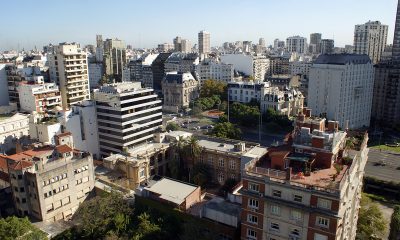
 World4 days ago
World4 days agoPhiladelphia health providers bring trans-affirming surgery to Argentina
-

 a&e features3 days ago
a&e features3 days ago‘Betty la Fea’ returns after 25 years and she’s a queer ally, mother and feminist boss
-

 Viewpoint3 days ago
Viewpoint3 days agoKamala Harris: The down-ticket savior we needed
